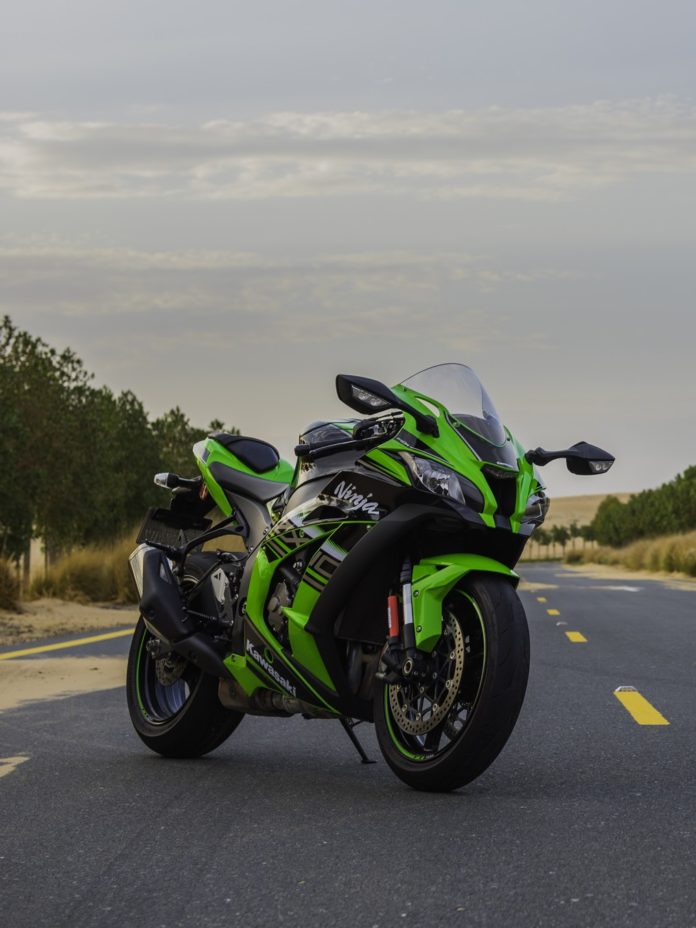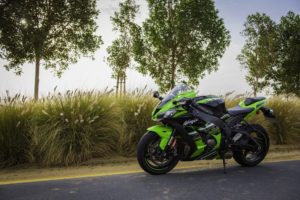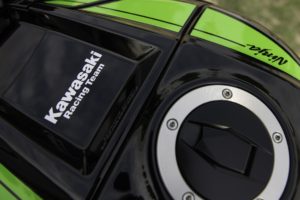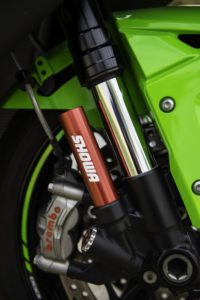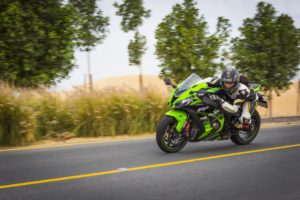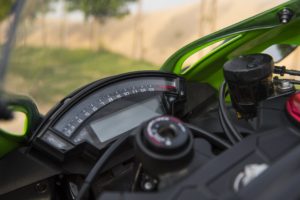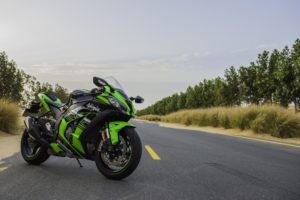Kawasaki wants to make it easier for you to ride faster, that’s the main theme of the ZX-10R. With two WSBK titles to their credit in the past three seasons, Kawasaki has certainly managed to make their race riders go faster and the company has tried to add all the possible learning from racing onto the ZX-10R. Born on the racetrack, Kawasaki’s Ninja line of supersport motorcycles has dominated many road-racing divisions, including the WorldSBK in 2013, 2015 and 2016 with the Ninja ZX-10R.
With these titles under its belt, the Kawasaki Ninja ZX-10R is one of the most respected liter-class bikes in the segment. Continuing with the Ninja heritage, the ZX-10R combines all of Kawasaki’s latest mechanical design with the very latest rider electronics suite. The result is a superbike with an excellent all-round performance of a powerful 998cc four-cylinder engine on the track, as well as Kawasaki’s proven reliability both on and off the track.
In a way, the Ninja ZX-10R is the highest performing, most track-focused sportsbike available from Kawasaki today for homologated racing use. Kawasaki also sells the ZX-10RR, which will be built in limited numbers. The ZX-10R boasts World Superbike-derived Showa suspension and a user-friendly electronics package that is exclusive to Kawasaki and only available to Ninja ZX-10R riders. The electronics package is developed from Kawasaki’s racing experience and includes Kawasaki Engine Braking Control, Kawasaki Launch Control Mode (KLCM), Kawasaki Intelligent anti-lock Braking System (KIBS), Kawasaki Cornering Management Function (KCMF), Sport Kawasaki TRaction Control (S-TRC) and Kawasaki Quick Shifter (KQS). How is that for a mouthful?
Kawasaki has improved the 998cc inline, four-cylinder, 16-valve engine by shaving off weight from the crankshaft, allowing for quicker revving and increased low-mid-range power. Tweaks on the pistons, head design, camshaft profiles and air box also allow for better response and power. The ZX-10 delivers a potent 204hp, a good 7hp more than the 2016 model and torque is rated at 113.5Nm. All that power is transferred to the wheels via a close-ratio, cassette-type transmission that is ideally suited to racing and gives strong corner exit acceleration.
Kawasaki has also made noticeable tweaks to the chassis and the body. The new ZX-10 gets new steering head position while swingarm rigidity and length have been increased which results in a longer wheelbase for more balanced handling. The slightly tweaked front cowl provides better aerodynamics, improves high-speed handling, reduces rider buffeting.
Another highlight on the ZX-10R is the track-focussed suspension. Giving the Kawasaki Ninja ZX-10R motorcycle a distinct advantage on and off the track is the Showa Balance Free Fork (BFF), which was specially created by Showa and derived from World Superbike competition experience. The main feature of the Showa BFF is that the design of the hydraulic system eliminates the pressure balance fluctuations typically found in conventional forks. With the BFF, the damping valves are located in one place – outside the fork legs in the damping force chamber. This allows the entire surface of the fork pistons to push the hydraulic fluid toward the valves in the damping force chamber, with nitrogen gas in the compression chamber pushing back against the oil, helping to maintain the balanced pressure inside the fork tube. The rear shock absorber is a Showa Balance Free Rear Cushion (BFRC) unit that is also inspired by World Superbike competition. Just like the forks, the rear shock has a separate damping force chamber that houses the compression and rebound damping adjusters. By separating them, it again allows the entire damping piston to focus on hydraulic fluid movement. There is also external spring preload adjustment. The result is increased traction and superior shock absorption.
Even though we didn’t ride this motorcycle on the track, the performance on the road was impressive and once you have the suspension setup to match your weight and riding style, this piece of race-derived kit will certainly impress. Stopping duties at the front are taken care of by Brembo radial-pump master cylinder connected via steel-braided lines to M50 cast monoblock four-piston callipers two large 330mm front rotors (versus 310mm discs on the outgoing ZX-10R). The rotors are cross-drilled and have a circumferential groove in the outer edge to aid heat dissipation.
With their experience in participating in the most competitive arena in the world for production motorcycles, Kawasaki continually pushes its technology forward, not only in terms of engine performance but also handling and the suite of electronic rider aids thanks to the introduction of Bosch five-axis Inertial Measurement Unit (IMU) and Kawasaki’s proprietary software, creating six axes of measurements. Much of this technology is transferred from the World Superbike pit box to the 2017 Ninja ZX-10R.
The IMU is able to measure longitudinal acceleration and braking, transverse or lateral forces when cornering, vertical acceleration such as when cresting a hill at steady speed, rotational roll rate (or lean angle), and the pitch rate such as during a wheelie or under hard braking. The Kawasaki software adds the sixth axis, yaw rate—such as experienced during a powerslide where the rear wheel is out of line with the front—through the onboard computer of the Ninja ZX-10R.
The IMU input into the ECU works in conjunction with wheel speed, brake pressure, throttle position, engine RPM and throttle opening sensors. This high level of chassis orientation awareness means the ECU can adapt to changes in tires and even road camber. This gives the Kawasaki system an advantage because the S-TRC, KLCM, KIBS and KCMF can respond to conditions in real time, rather than using only pre-set limits. This makes the whole system predictive rather than adaptive. The S-TRC system features five modes of intervention: Modes one and two are designed for a racer on the track, while mode three is designed for a dry circuit with high-grip tires and mode four is intended for dry canyon roads or commuting, while mode five is programmed to suit.
The Ninja ZX-10R’s KCMF helps distribute optimum hydraulic pressure to the callipers based on the motorcycle’s lean/pitch angle. The result is reduction of the motorcycle’s tendency to stand up when applying the brakes in a turn on the track. Instead, the Ninja ZX 10R is better able to follow the rider’s intended line while slowing down for a difficult turn, rather than having the tendency to run wide. The KLCM features three different modes that are designed to suit different rider abilities. Mode one offers less intrusion from the system but requires the rider to operate the clutch and throttle with greater sensitivity. Mode three allows the electronics to do more of the work while the rider simply drops the clutch with the throttle wide open. Mode two gives a setting between the first and third. The KLCM assists racers by optimizing acceleration from a stop by controlling engine output to prevent wheelspin and minimize font-end lift when leaving the starting line.
Every single motorcycle in the litre-class category is an impressive machine. This is the segment where most manufacturers bring out their best and the most cutting-edge piece of technology in their arsenal. This is also where competition goes down to every millimetre, milligram and millisecond. To establish yourself as a leader in this segment, you need to not only have a great product but also a product that’s proven itself in competitive environments across the globe and for Kawasaki, that’s just what the ZX-10R is, a race proven machine. Given its very attractive price point and extensive technology, the ZX10R is an extremely tempting proposition for anyone looking for a superb road legal track machine.


